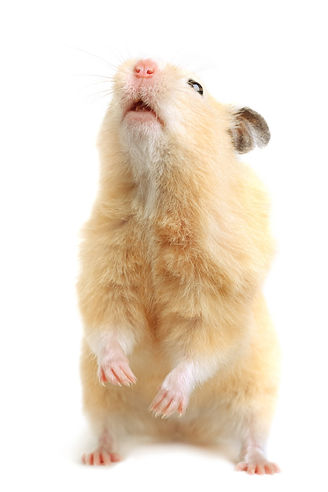BONDING WITH YOUR POCKET PET

Once you’ve brought your new family member home, it is important to allow them time to properly acclimate to their new surroundings. It might be tempting to try and play with them immediately, but it is best to put them in their new cage and give them a few days to feel secure before attempting to interact heavily with them. Once they seem comfortable and have started investigating their new home, you can start the process of bonding with them.
Most small animals have better hearing than sight, so begin by spending time talking to them in a soothing voice so they get used to your presence.
From there, allow them to get used to your scent. Put your hand in the cage and let them come to you in their own time, smelling and running away as they see fit. It is always better to put your hand inside the cage instead of sticking a finger through the cage bars, since this may be mistaken for a treat and encourage nipping. Use tasty treats such as fruits or vegetables to encourage your pet to come to you.
Once they are comfortable taking food from your fingers, put it in the palm of your hand so they have to climb up to get it. Once they are relaxed, you can practice lifting them and taking them out of the cage before they get their treat.
Always remember to fully support their body once they are out of the cage to ensure they feel safe, secure, and don’t fall. Never pick up a small animal by the tail or ears, or squeeze them too tightly.
Repeat this process for several short sessions to build a bond with your new furry family member.

IMPORTANT TIPS
1. The more time you spend with your new family member the more they will bond with you. Depending on their species, age, temperament, and past, this may take anywhere from a few days to several months.
2. Remember not to grab or squeeze any pocket pet, or pull them by their tails. They are much smaller than people and can easily be hurt. Some pocket pets, such as gerbils, can lose their tails just from their tails being pulled on.
3. Allow them to become comfortable with each step before moving on to the next one.
4. Some species are naturally more social (such as rats) while others take more convincing (such as hedgehogs).
5. Try to create a routine for your pet. It is comforting to animals to have a routine and know what to expect each day.
6. Bonding is the first and most important step in building a healthy loving relationship with your new fuzzy family member.
BONDING WITH SUGAR GLIDERS
Sugar gliders are very special creatures who bond very strongly with their families.
BONDING POCKET PETS WITH EACH OTHER
DISCLAIMER
All information shared by MN Pocket Pet Rescue is researched, up to date, and accurate to the best of our ability. We are not a licensed veterinary organization and do not intend to present ourselves as such. All educational material contains our best recommendations for care specific to each species. However, all animals are different, and some may have unique needs. MN Pocket Pet Rescue does not assume any liability for the well-being of any animal not under our care. Always use your best judgment and follow veterinary recommendations whenever necessary. If you have any questions or find inaccurate information, please contact us.









